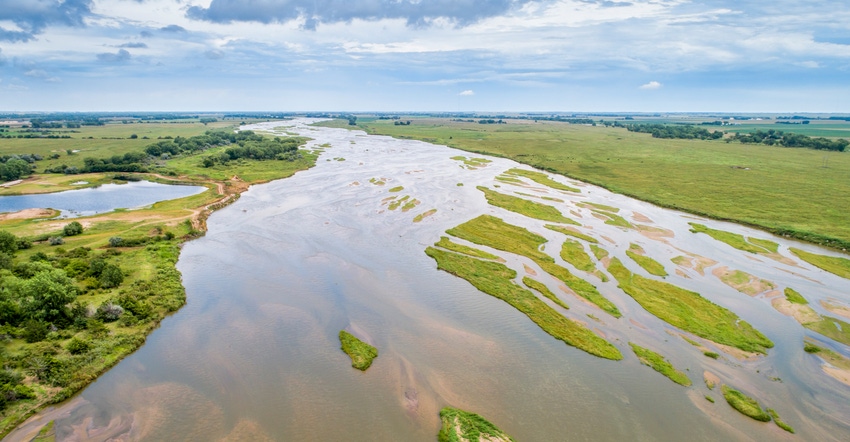
When Nebraska was inundated with extreme floods along several of the state's major waterways this spring, many made claims that the Cornhusker State is home to more miles of river than any other state.
While it's great that people are paying attention to our state's beautiful natural resources (even if it is in a time of tragedy), it's worth pointing out that Nebraska does not, in fact, have more miles of river than any other state. Trust me — I'm just as guilty as anyone at propagating this falsehood.
It's widely disseminated on the internet as well, but that doesn't make it any less false. Think about it — Alaska, the largest state in the U.S., more than twice the size of Texas and more than eight times the size of Nebraska, surely must have more miles of river.
Indeed, according to the official website for the National Wild and Scenic Rivers System, Alaska has 365,000 miles of river, compared with Nebraska's 79,056 and Texas' 184,797.
The National Wild and Scenic Rivers System designates 197 miles of river in Nebraska as wild and scenic — most of which are on the Niobrara and Missouri rivers along the northern boundary of the state. However, anyone who's been canoeing or "tanking" on the Niobrara River knows the entire 568 miles the river runs through Wyoming and Nebraska are scenic.
And each of Nebraska's rivers is remarkable in its own way. The state itself was named from an Otoe word meaning "flat water" — referring to the Platte River, which runs about 310 miles from west to east in Nebraska (more than 1,000 miles if its tributary, the North Platte River, is included).
Nebraska's rivers include Beaver Creek, the Big Blue River, Calamus River, Dismal River, Elkhorn River, Frenchman Creek, Little Blue River, Lodgepole Creek, Logan Creek, Loup River, Medicine Creek, Middle Loup River, Niobrara River, North Fork Big Nemaha River, North Loup River, North Platte River, Platte River, Republican River, Shell Creek, South Loup River, South Platte River, White River and Wood River.
Nebraska has more than 4,500 feet of elevation change from its highest point in the west to the lowest point in the southeast, and all these rivers ultimately end up feeding the Missouri River to the east — including those rivers that flow from Nebraska and into Kansas or South Dakota.
As such, the entirety of Nebraska's watersheds is within a single hydrologic unit code, or HUC — a set of numbers that identify a hydrologic feature. The smaller the watershed, the more numbers needed to identify it.
In Nebraska's case, all of the state falls under a single two-digit HUC, needing only two numbers to identify it — it's also the largest two-digit HUC in the lower 48. At 520,960 square miles, it encompasses all of the area draining into the Missouri River.
Nebraska is a state known for its water resources — including the Ogallala Aquifer that lies beneath the surface of the state — and the nearly 80,000 miles of river that run through it. Although most of Nebraska's irrigation is pumped from groundwater, surface irrigation still plays a role — particularly in the Panhandle, southwest, south-central and north-central parts of the state.
And Nebraska's network of creeks and rivers also contribute to alluvial aquifers. Nebraska may not have more miles of river than any other state, but it's still blessed with ample water resources — part of what makes it not only the Cornhusker State and the Beef State, but also the Irrigation State.
About the Author(s)
You May Also Like






